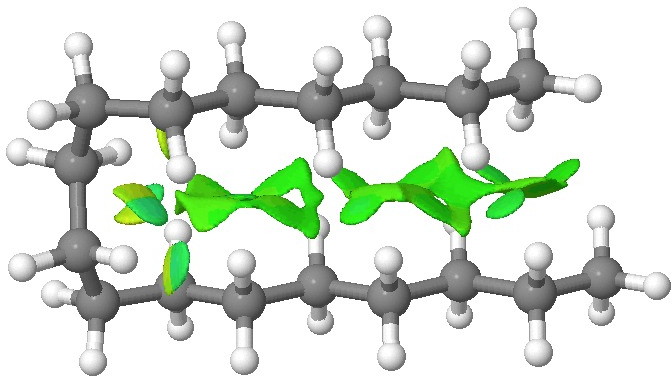
Solvolytic mechanisms are amongst the oldest studied, but reproducing their characteristics using computational methods has been a challenging business.

Solvolytic mechanisms are amongst the oldest studied, but reproducing their characteristics using computational methods has been a challenging business.

I was lucky enough to attend the announcement made in 2012 of the discovery of the Higgs Boson. It consisted of a hour-long talk mostly about statistics, and how the particle physics community can only claim a discovery when their data has achieved a 5σ confidence level. This represents a 1 in 3.5 million probability of the result occurring by chance. I started thinking: how much chemistry is asserted at that level of confidence?
Not long ago, I described a cyclic carbene in which elevating the carbene lone pair into a π-system transformed it from a formally 4n-antiaromatic π-cycle into a 4n+2 aromatic π-cycle. From an entirely different area of chemistry, another example of this behaviour emerges; Schreiner’s[cite]10.1039/C2SC21555A[/cite] trapping and reactions of t-butyl-hydroxycarbene, as described on Steve Bachrach’s blog.

In the previous post I mentioned in passing the Grignard reagent benzyl magnesium bromide as having tetrahedral coordination at Mg. But I have now noticed, largely through spotting Steve Bachrach’s post on “Acene dimers – open or closed?” another geometric effect perhaps worthy of note, certainly one not always noted in the past; that of dispersion forces.
Homoaromaticity is a special case of aromaticity in which π-conjugation is interrupted by a single sp 3 hybridized carbon atom (it is sometimes referred to as a suspended π-bond with no underlying σ-foundation). But consider the carbene shown below. This example comes from a recently published article[cite]10.1021/ja407116e[/cite] which was highlighted on Steve Bachrach’s blog.

This is a continuation of the discussion started on Steve Bachrach’s blog about a molecule with a very short H…H interaction involving two Si-H groups with enforced proximity. It had been inferred from the X-ray structure[cite]10.1021/ja407398w[/cite] that the H…H distance was in the region of 1.50Å. It’s that cis-butene all over again! So is that H…H region a bond? Is it attractive or repulsive? Go read Steve’s blog first.

We tend to think of simple hydrocarbons as relatively inert and un-interesting molecules. However, a recent article[cite]10.1002/anie.201202894[/cite], which was in fact highlighted by Steve Bachrach on his blog , asks what “ The Last Globally Stable Extended Alkane ” might be. In other words, at what stage does a straight-chain hydrocarbon fold back upon itself, and no significant population of the linear form remain?

Here is a challenge: what is the longest C-C bond actually determined (in which both carbon termini are sp 3 hybridised)? I pose this question since Steve Bachrach has posted on how to stabilize long bonds by attractive dispersive interactions, and more recently commenting on what the longest straight chain alkane might be before dispersive interaction start to fold it (the answer appears to be C 17 ). A search of the

Stoyanov, Stoyanova and Reed recently published on the structure of the hydrogen ion in water.

Steve Bachrach has just blogged on a recent article (DOI: 10.1002/anie.200903969) claiming the isolation of a compound with a C≡S triple bond; A compound with a C≡S triple bond Steve notes that Schreiner and co claim a “structure with a rather strong CS double bond or a weak triple bond”. With this size of molecule, the proverbial kitchen sink can be thrown at the analysis of the bonding.